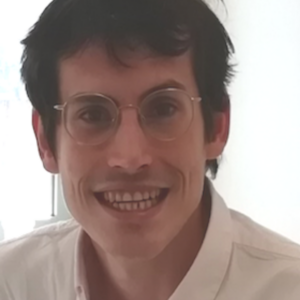In order for agents to make decisions based on their noisy sensory observations, they must create a model of their environment using an internal state-space of extracted features. The innovative concept we propose is that this space possesses a geometric structure that allows features to be integrated as a cohesive whole. We achieve this by encoding various perspectives that the agent can have on its environment directly into the geometry of its ‘state space.’ Each perspective corresponds to a ‘frame’ that helps the agent orient itself within its environment. One mathematical construction that encapsulates this idea is the notion of a G-space: a (topological) space X with a group G acting (continuously) on X. In this framework, the agent’s state-space encompasses all possible frames the agent can adopt, and each change of frame is associated with an element of the group. This G-space serves as a global workspace where features are organized; perspectives can be those of other potential agents or those induced by the agent’s own actions, such as its movements.
Various models of agency exist in the literature, with one of the most common being stochastic optimal control, including Markov Decision Processes and Partially Observable Markov Decision Processes. Active inference is another notable example. All these previous formalisms rely on an internal state-space. We propose adapting such formalisms to cases where the state space is a G-space. This adaptation opens up new theoretical and algorithmic possibilities, which we have been actively researching in recent years [1,2]. For a comprehensive overview of the framework and our results, please refer to Section 2 of ‘The Projective Consciousness Model: projective geometry at the core of consciousness and the integration of perception, imagination, motivation, emotion, social cognition, and action’ [3]. We will show how changing the group G acting on the state-space of the agent modifies its exploratory behavior [4].
[1]A mathematical model of embodied consciousness, D. Rudrauf, D.
Bennequin, I. Granic, G. Landini, K. Friston, and K. Williford,
Journal of Theoretical Biology, 2017
[2]The moon illusion explained by the projective consciousness model,
D. Rudrauf, D. Bennequin, and K. Williford, Journal of Theoretical
Biology, 2022
[3] The Projective Consciousness Model: projective geometry at the
core of consciousness and the integration of perception, imagination,
motivation, emotion, social cognition and action.
D. Rudrauf, G. Sergeant-Perthuis, Y. Tisserand, G. Poloudenny, K.
Williford and M-A. Amorim, Brain Science, 2023.
[4]Influence of the Geometry of the world model on Curiosity Based Exploration
G. Sergeant-Perthuis, D. Rudrauf, D. Ognibene, D. Ognibene, and Y.
Tisserand, https://arxiv.org/abs/2304.00188


